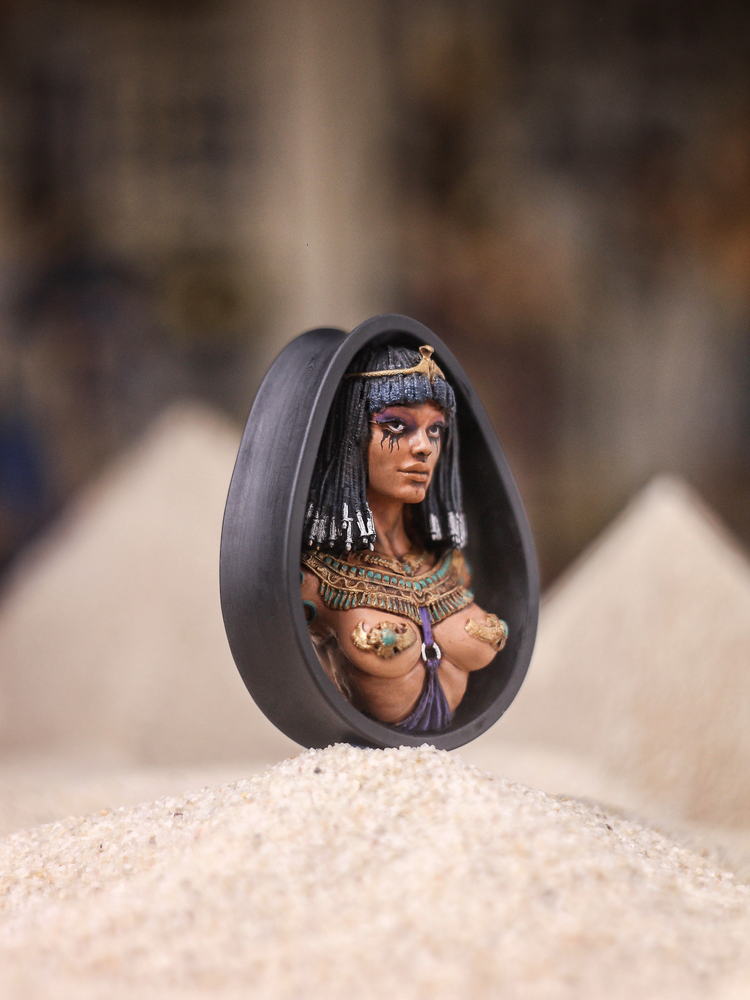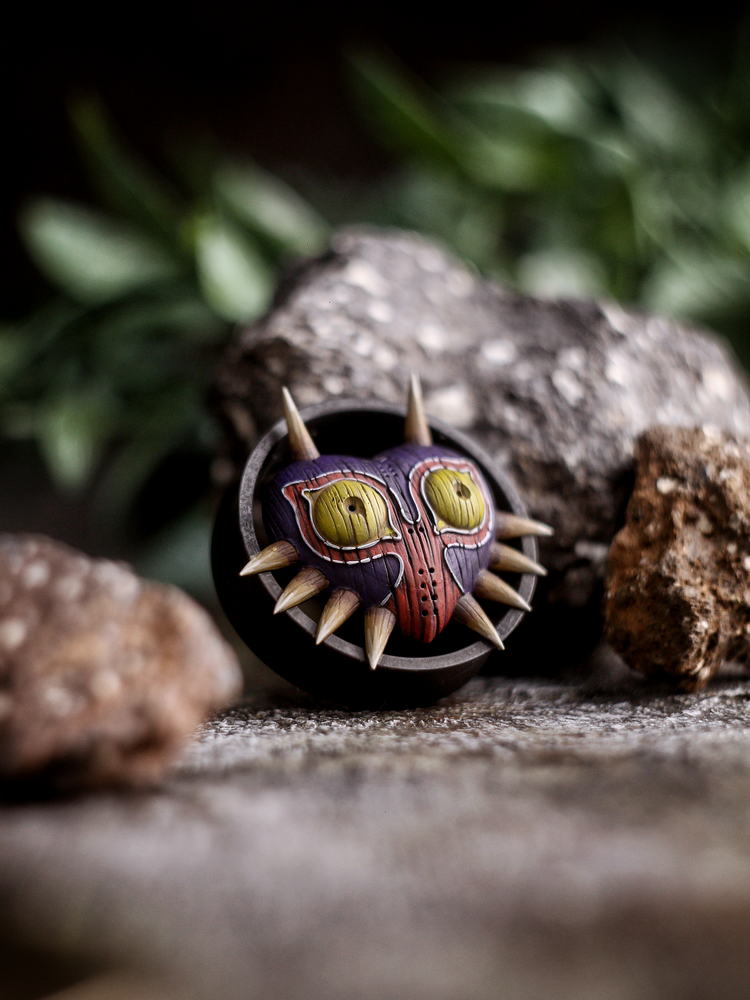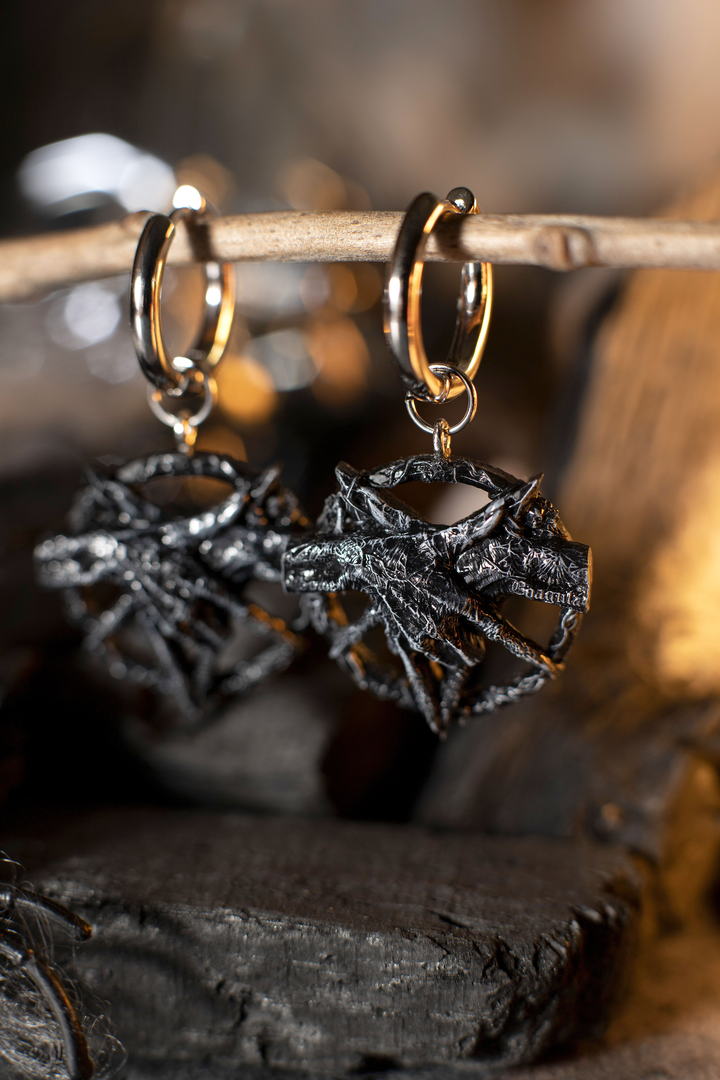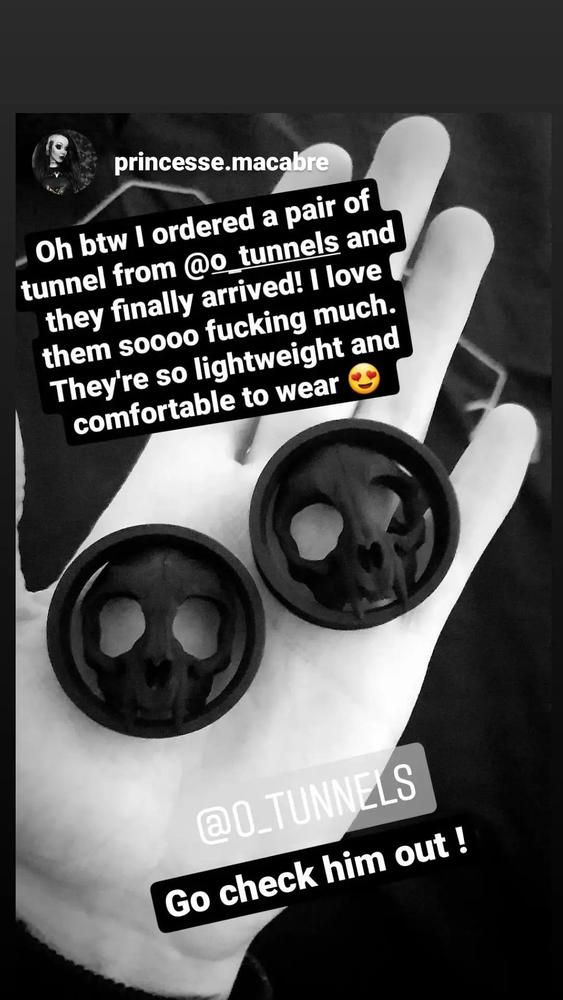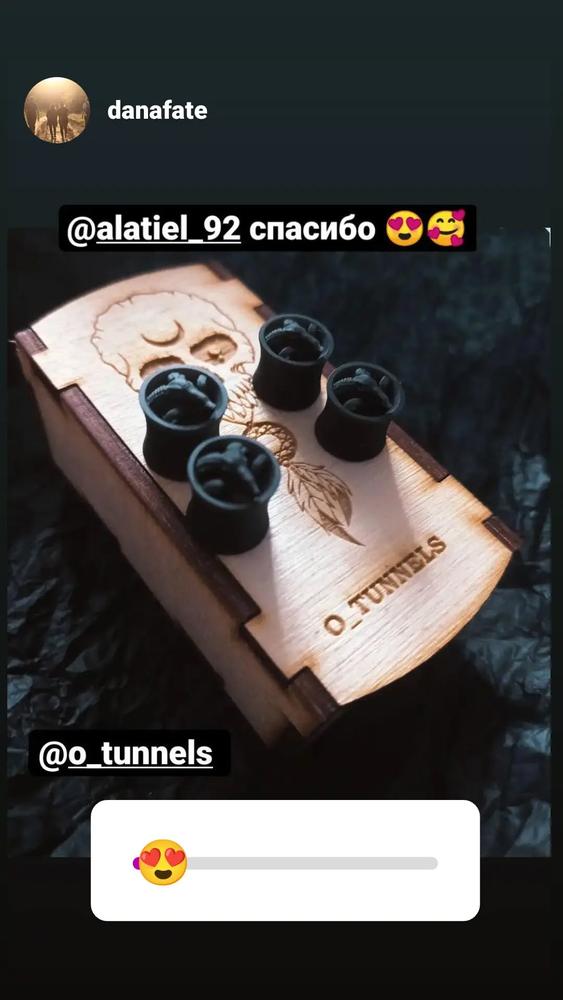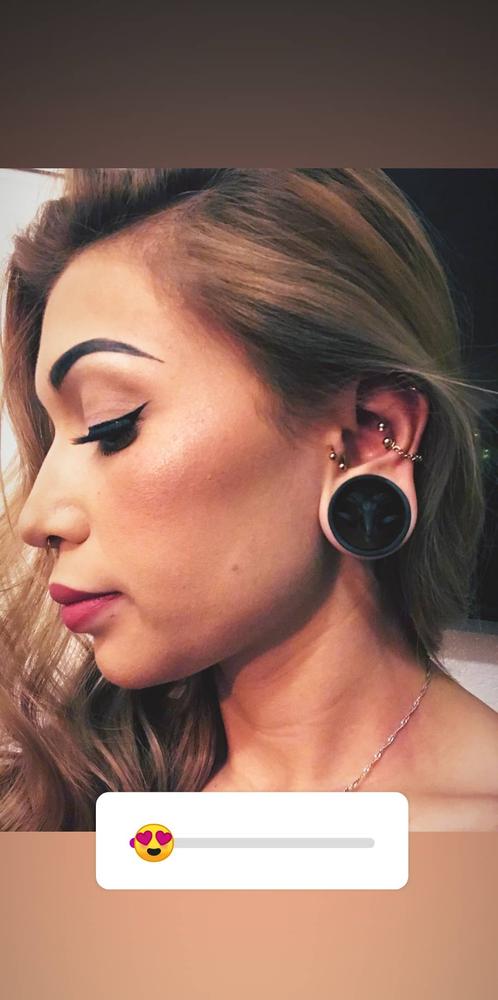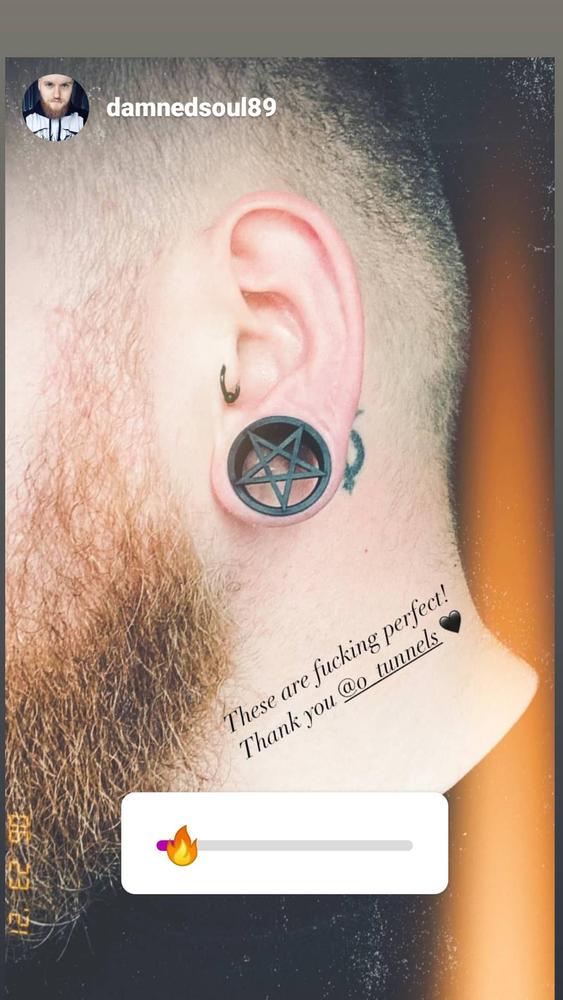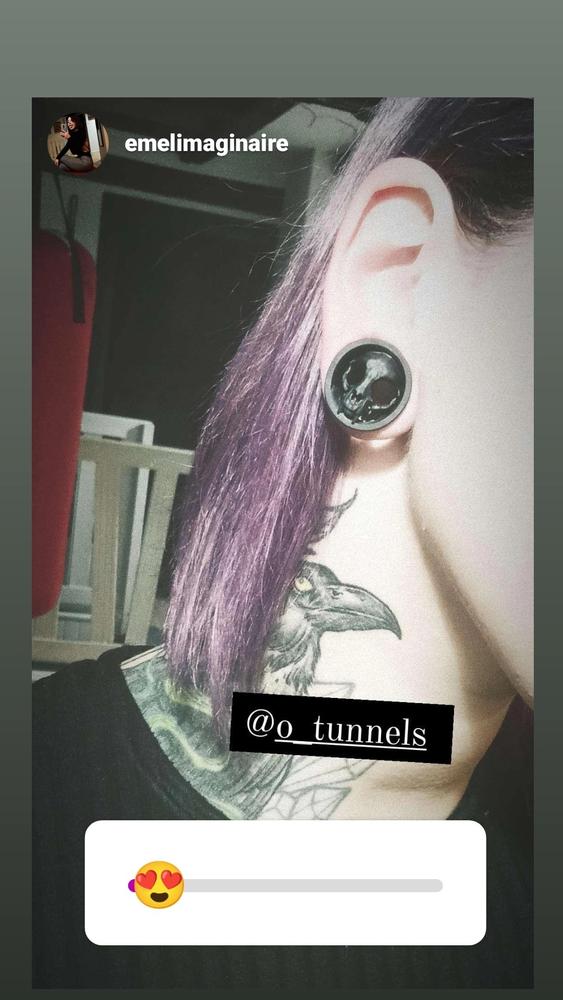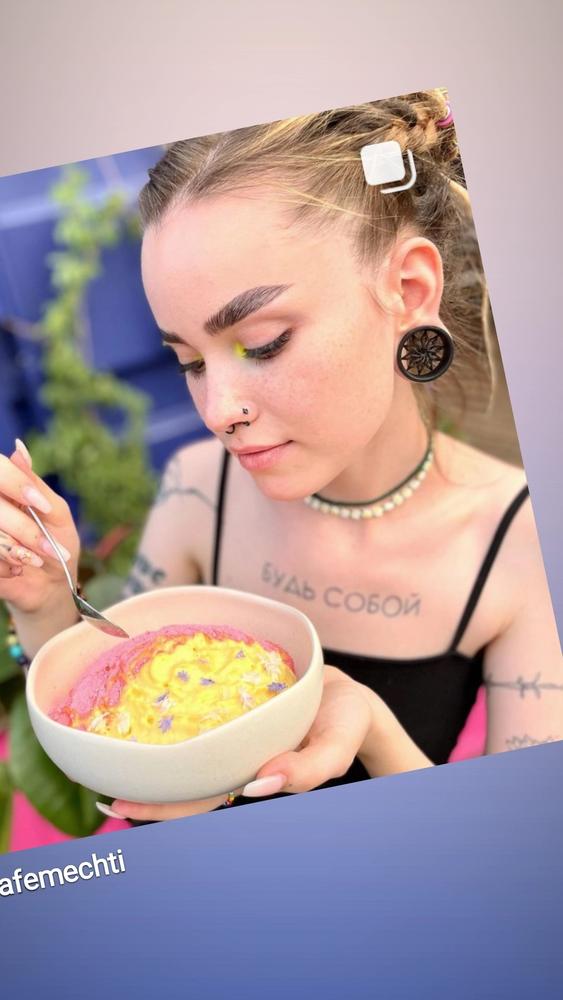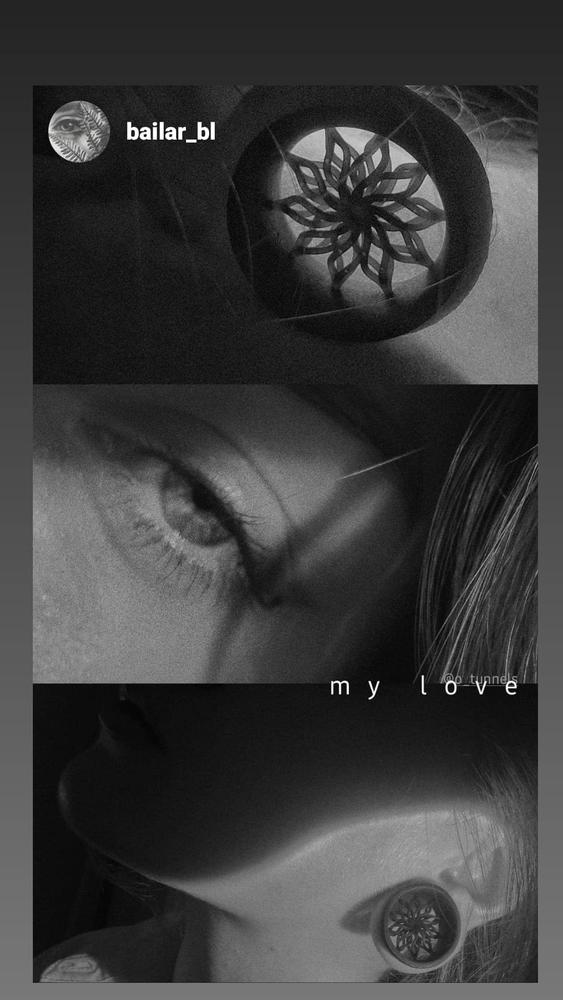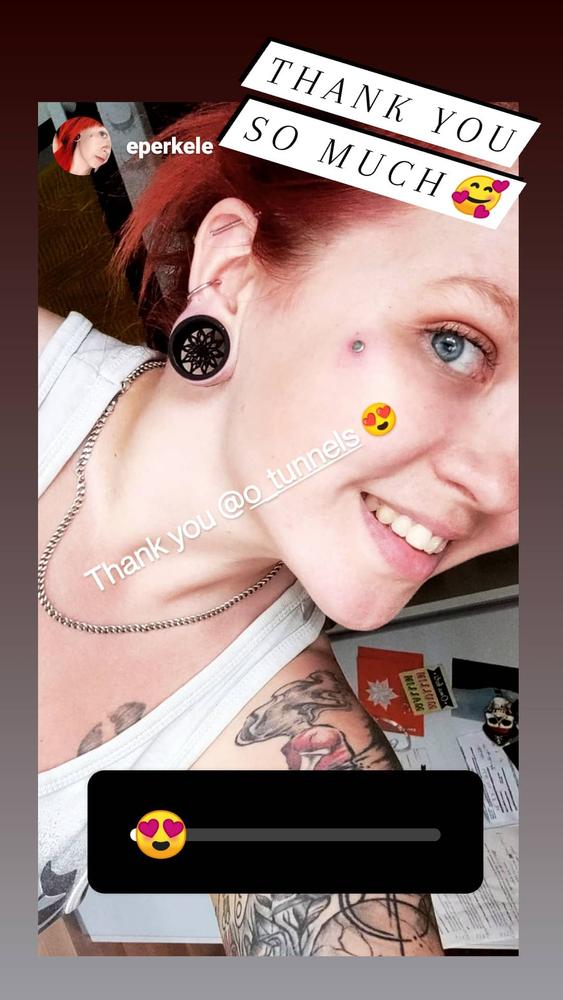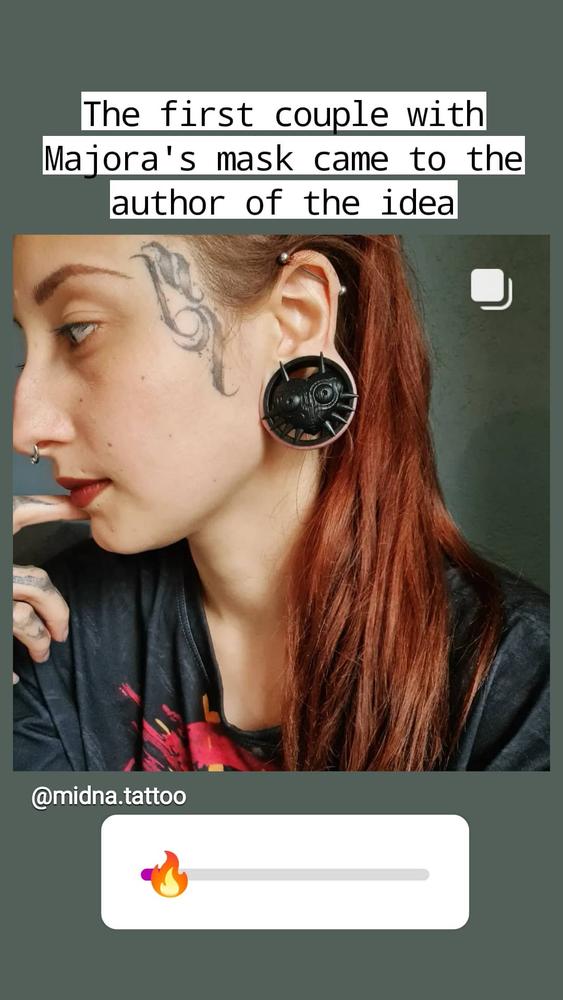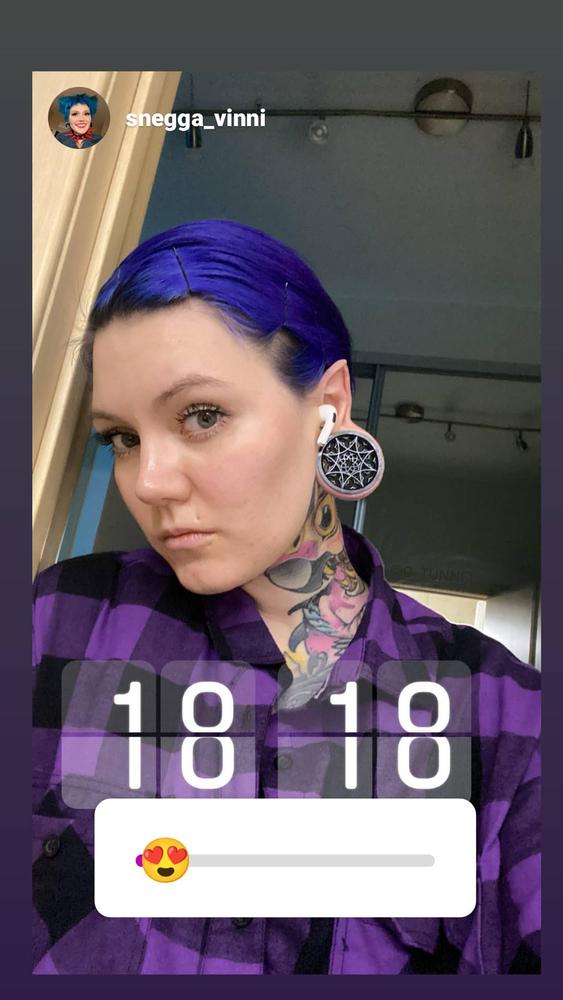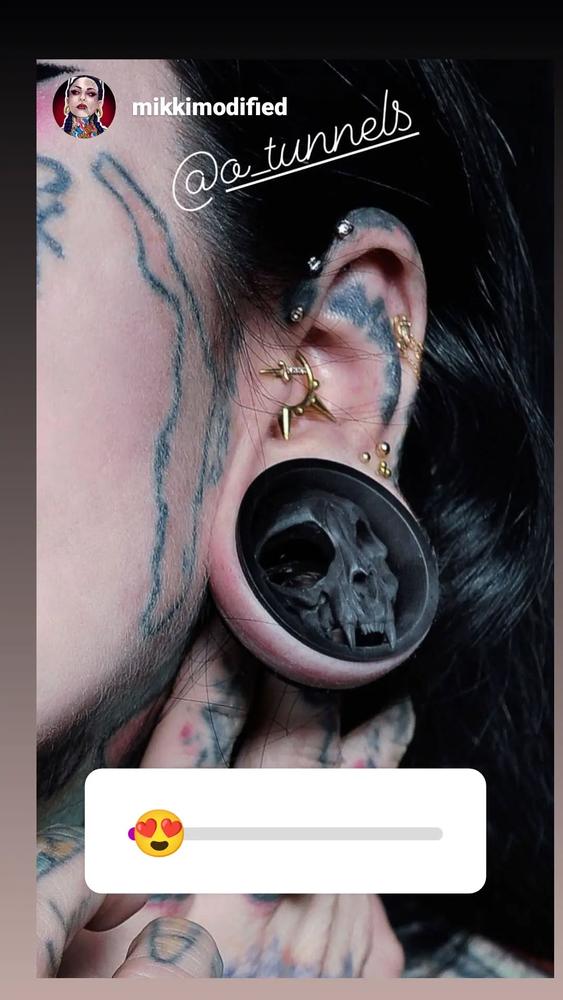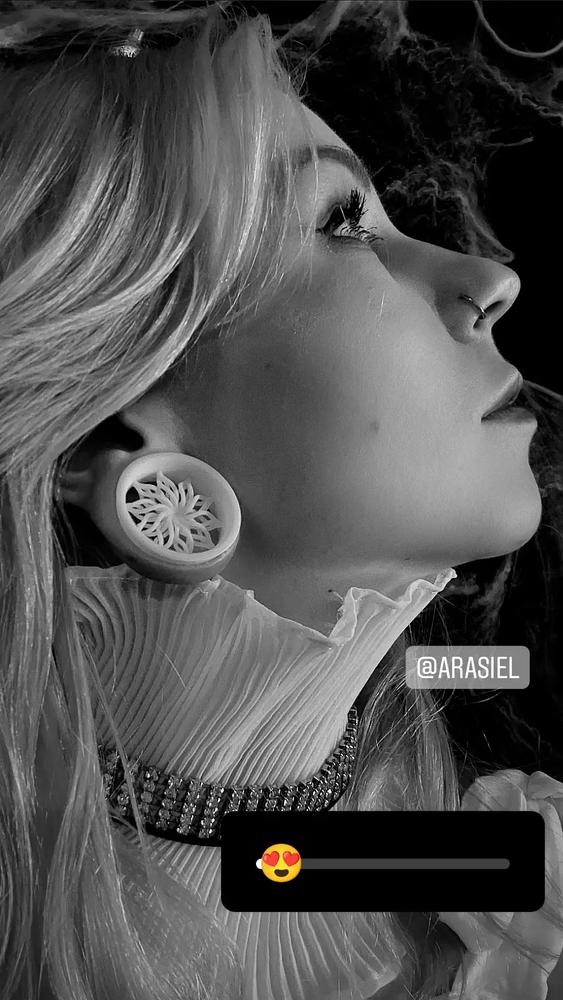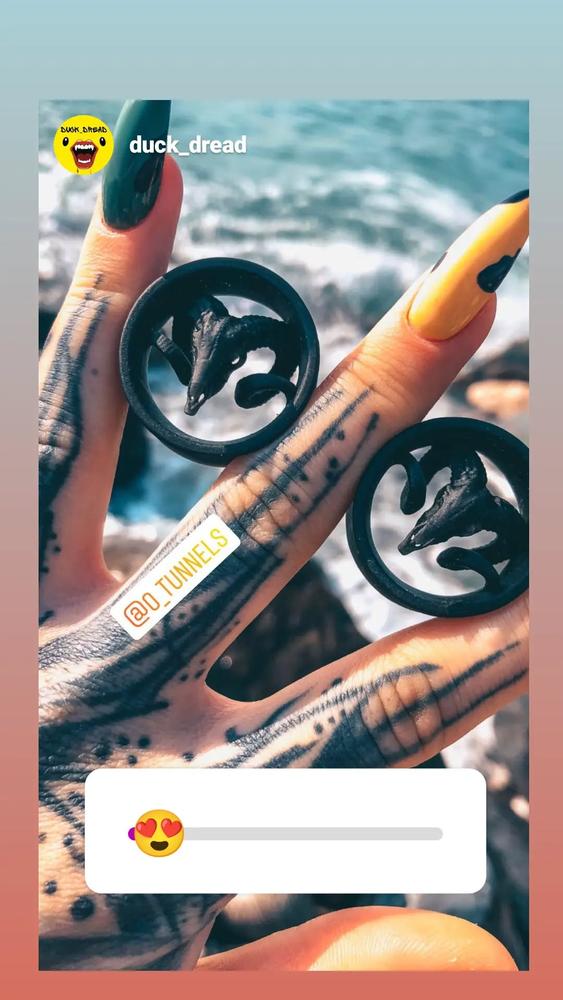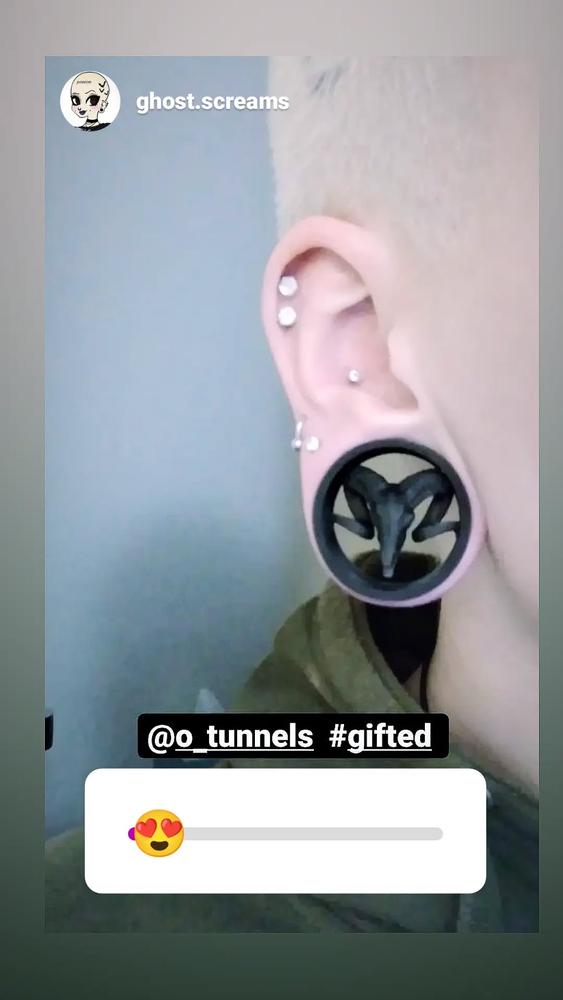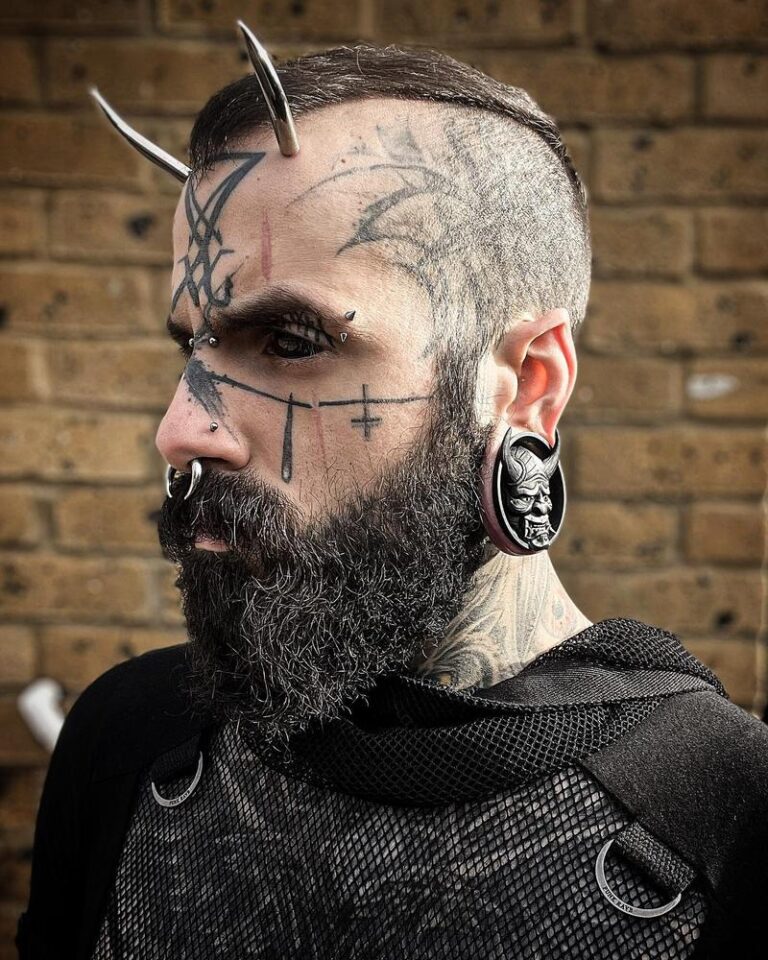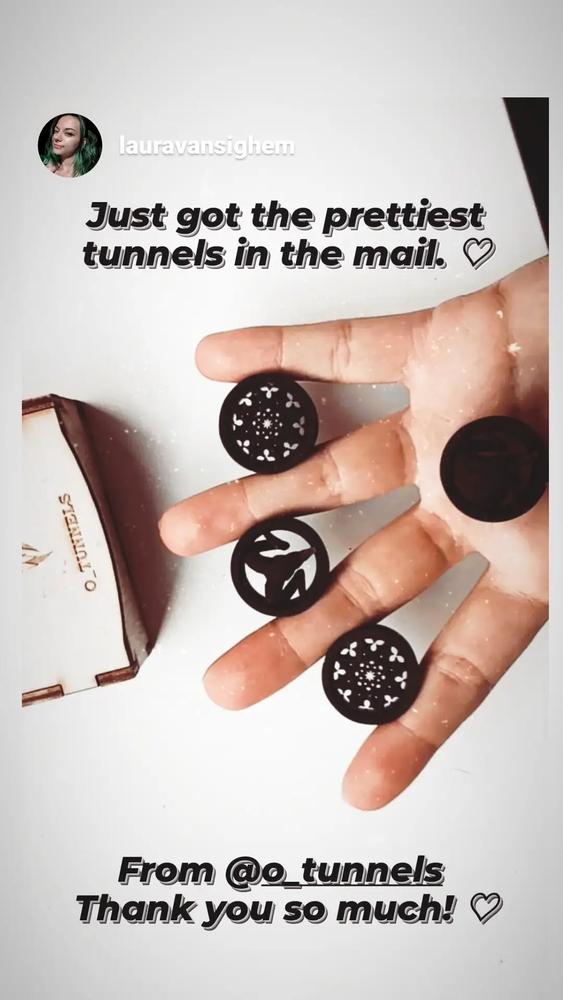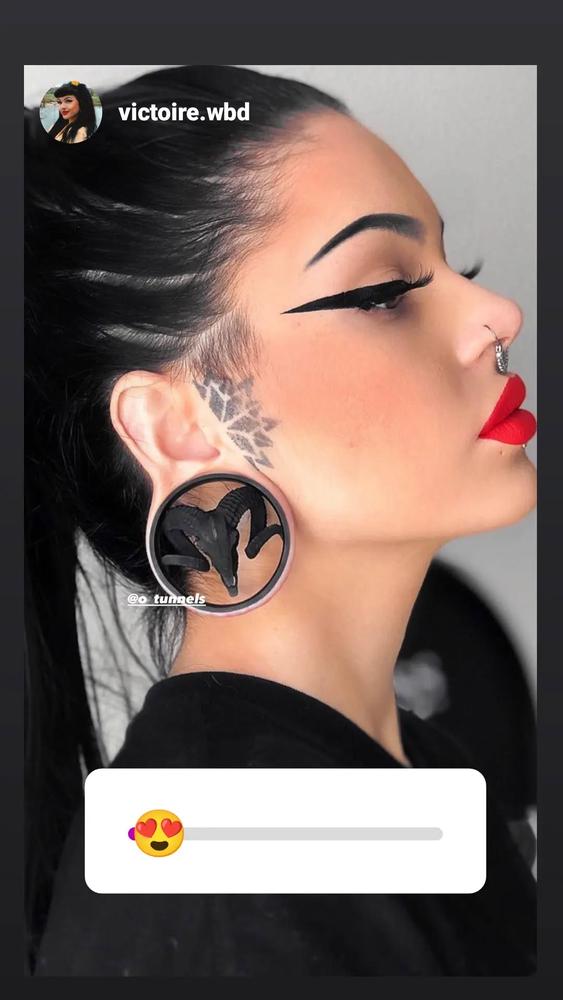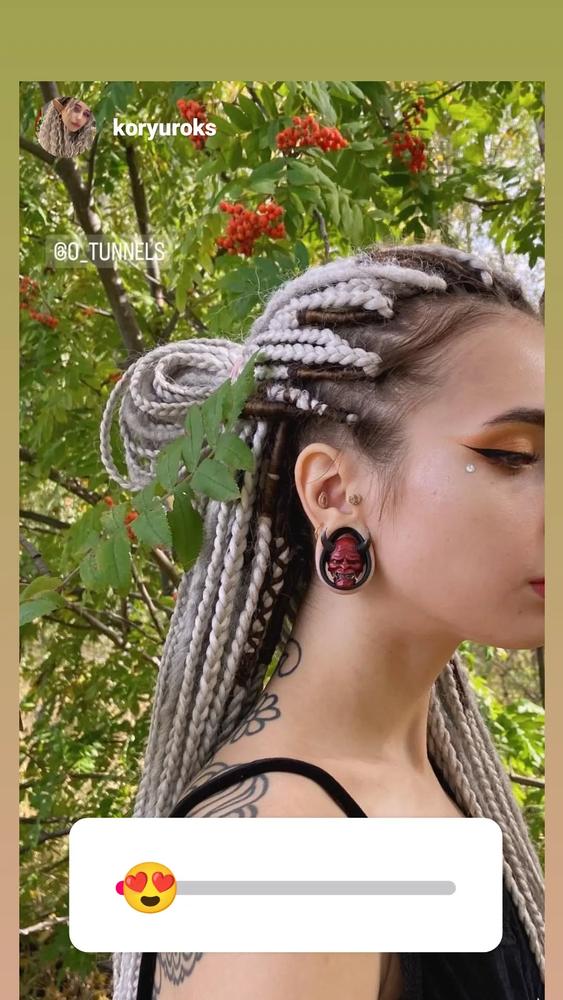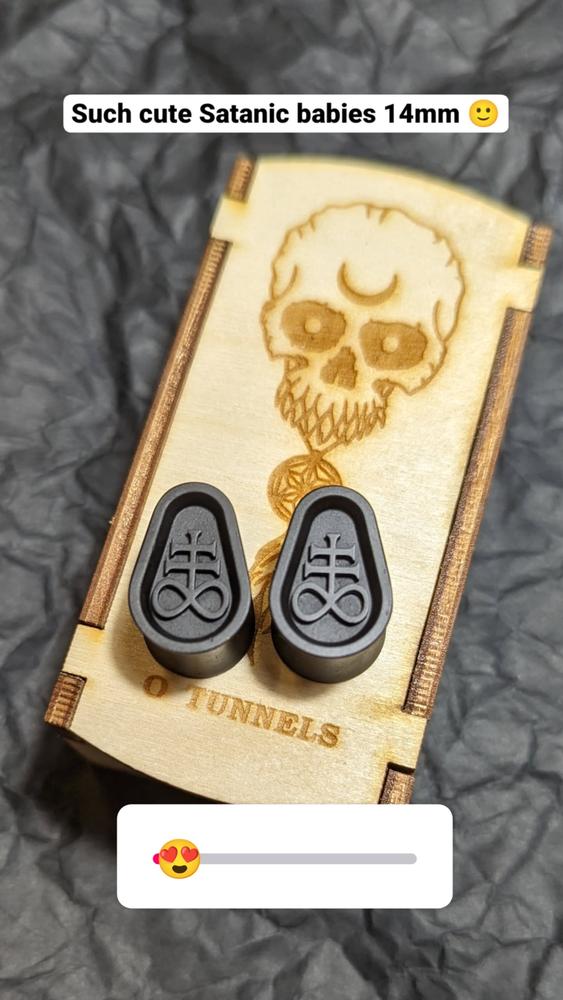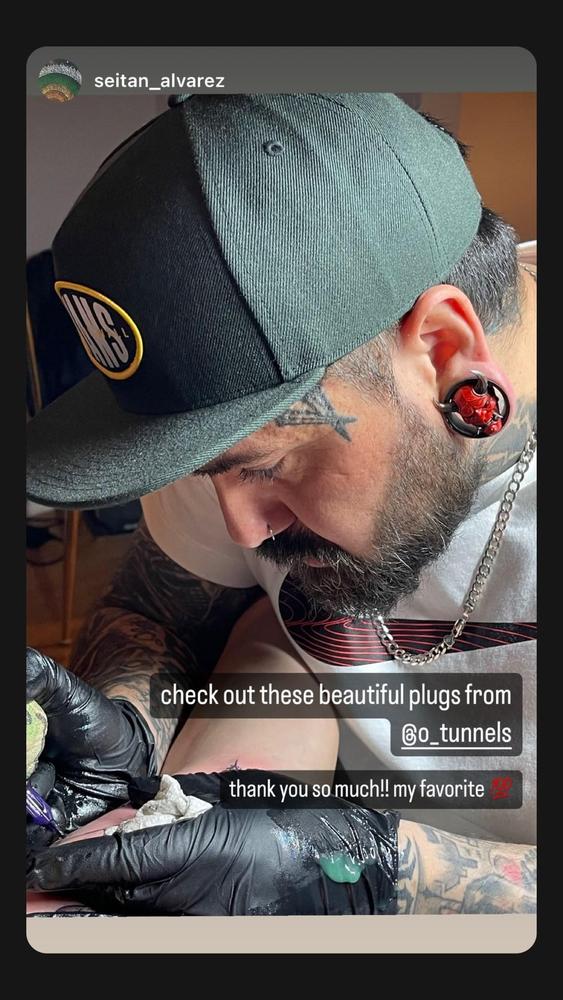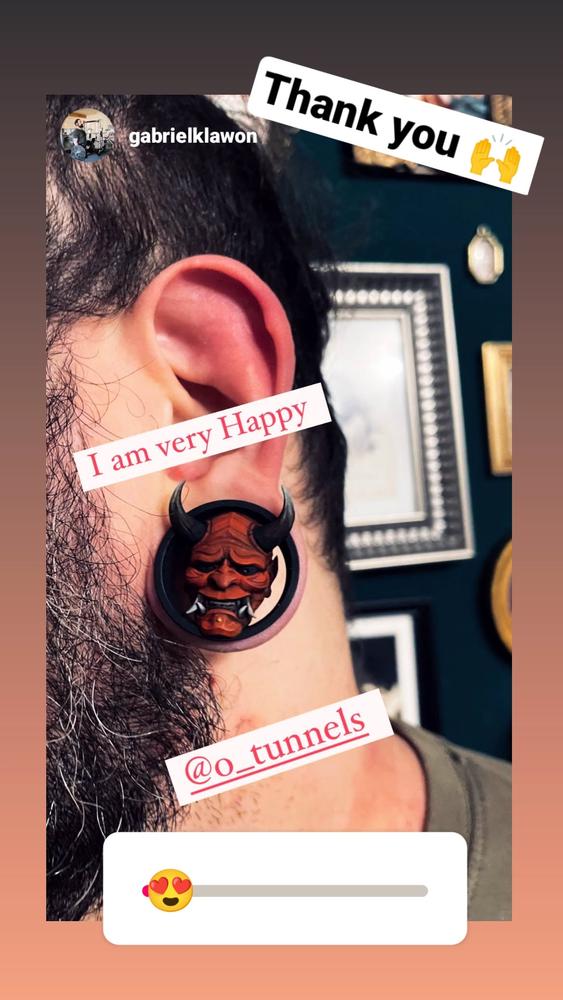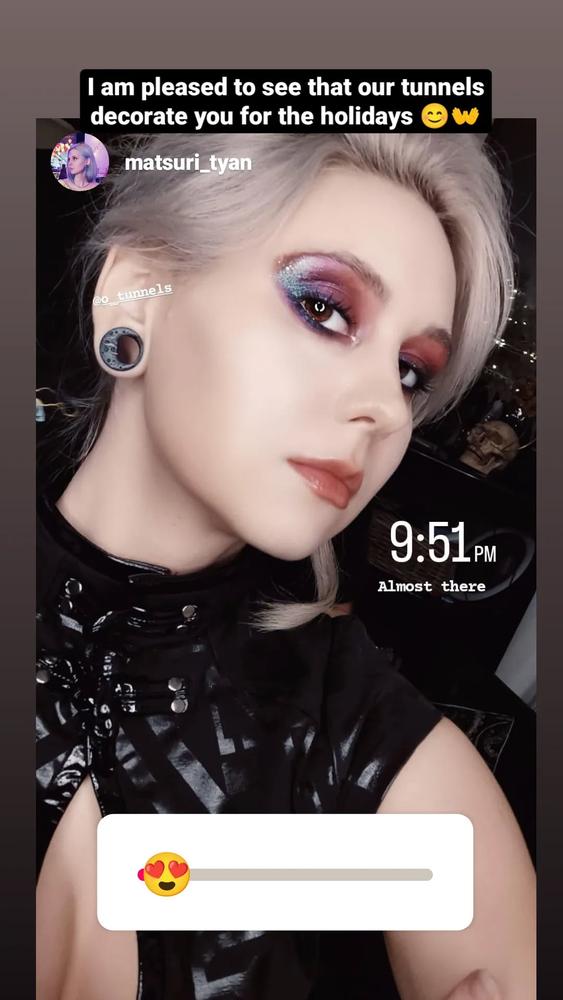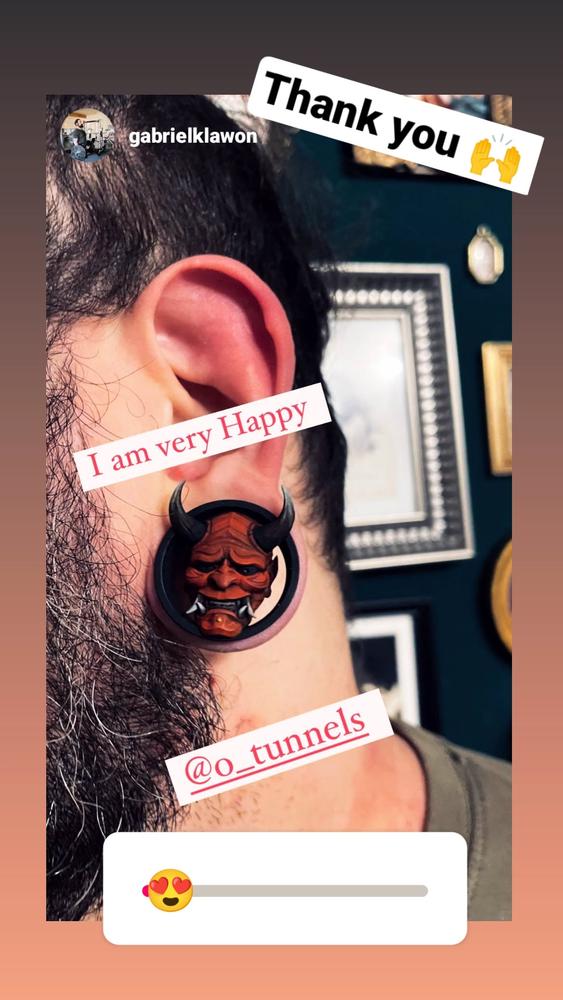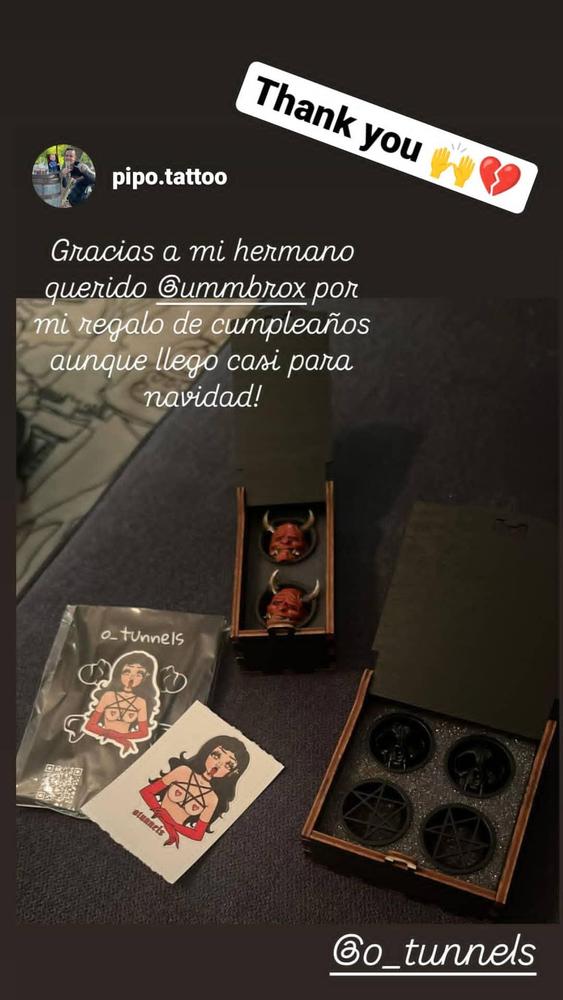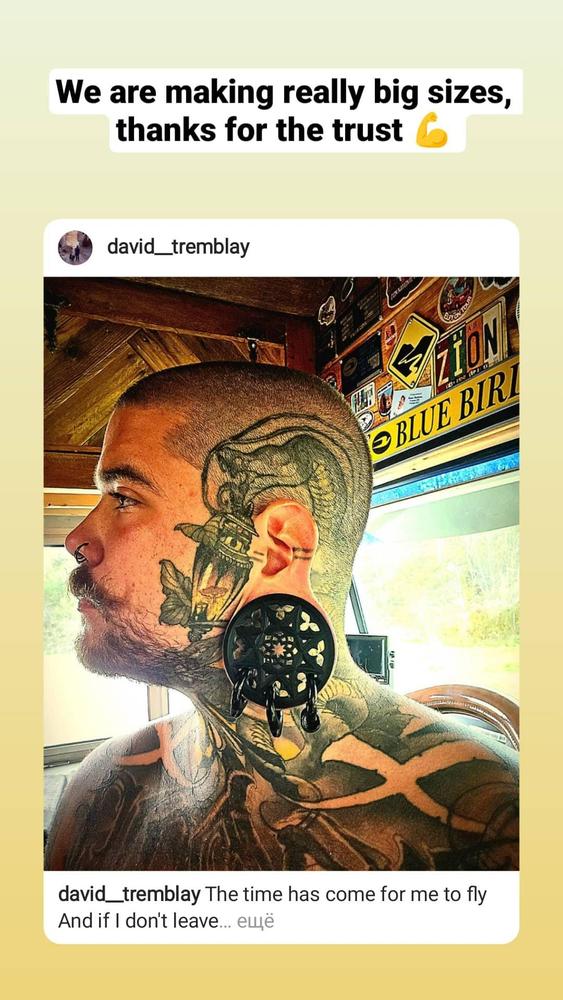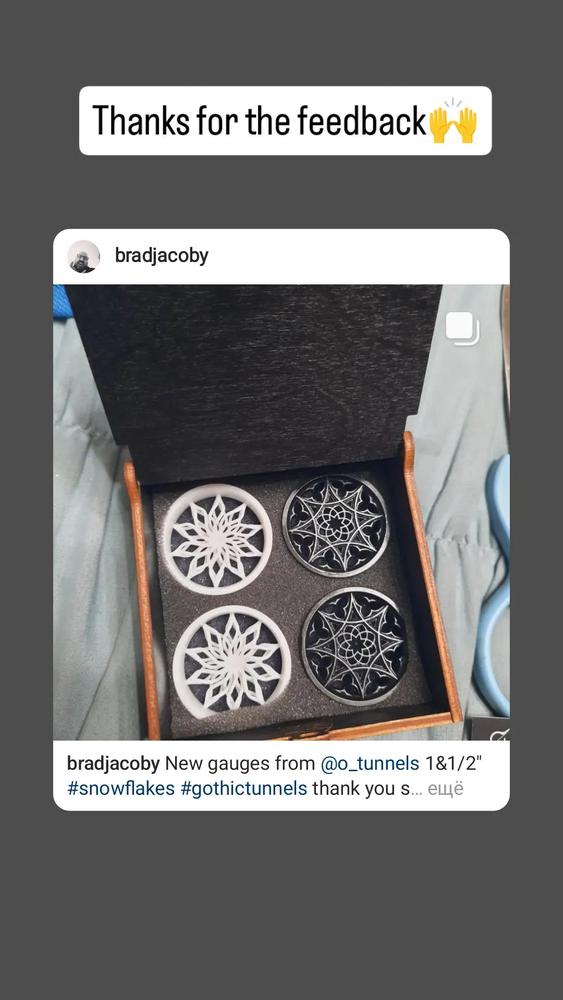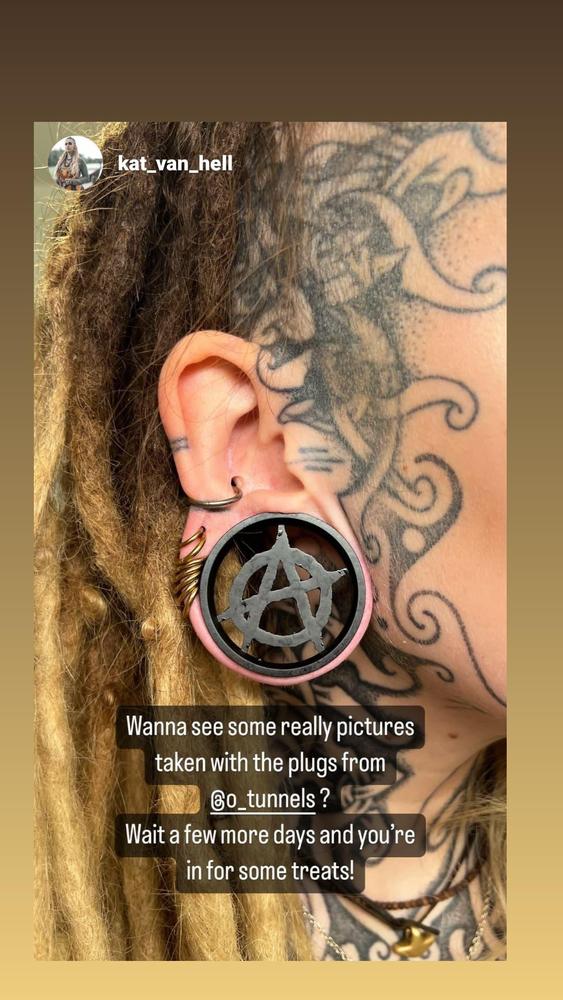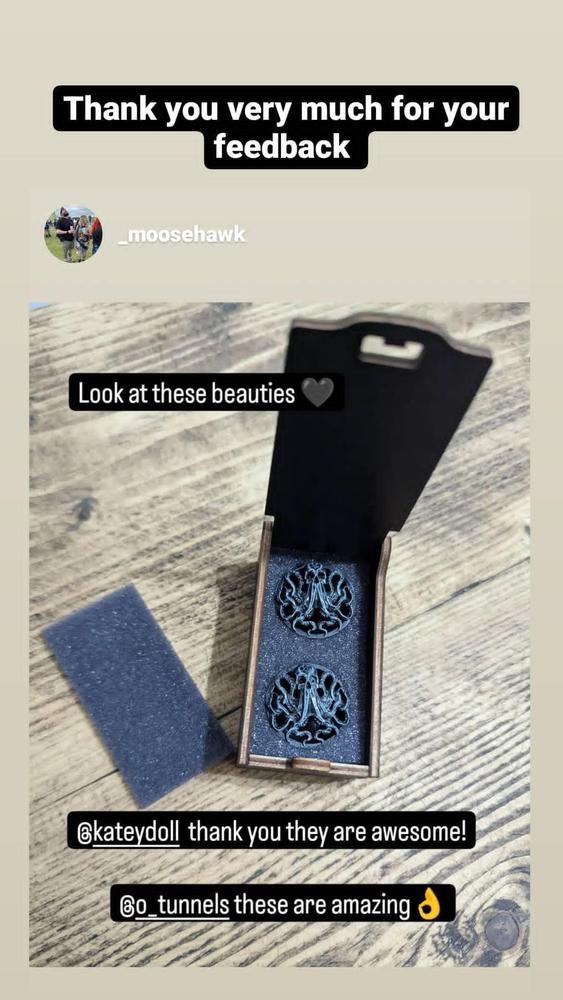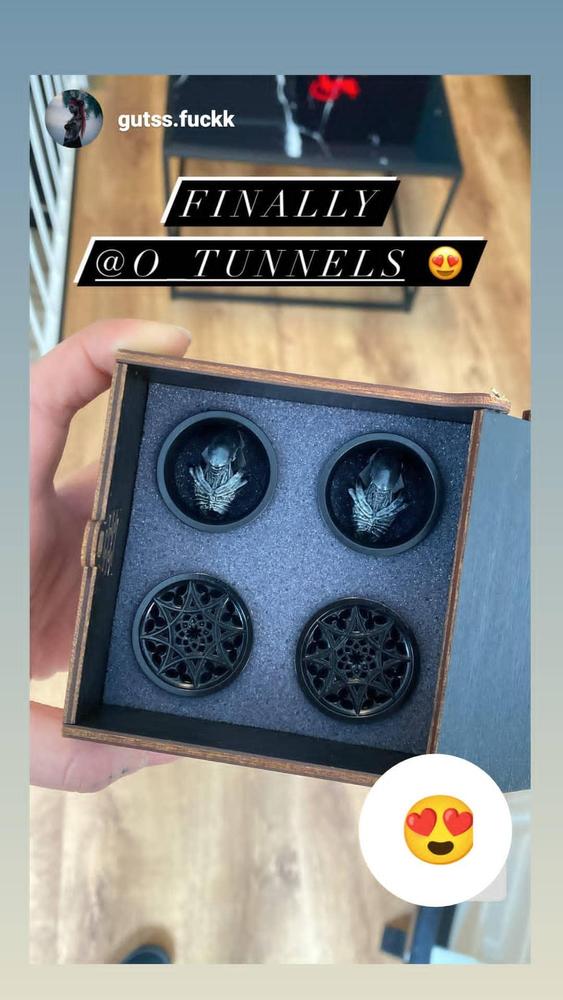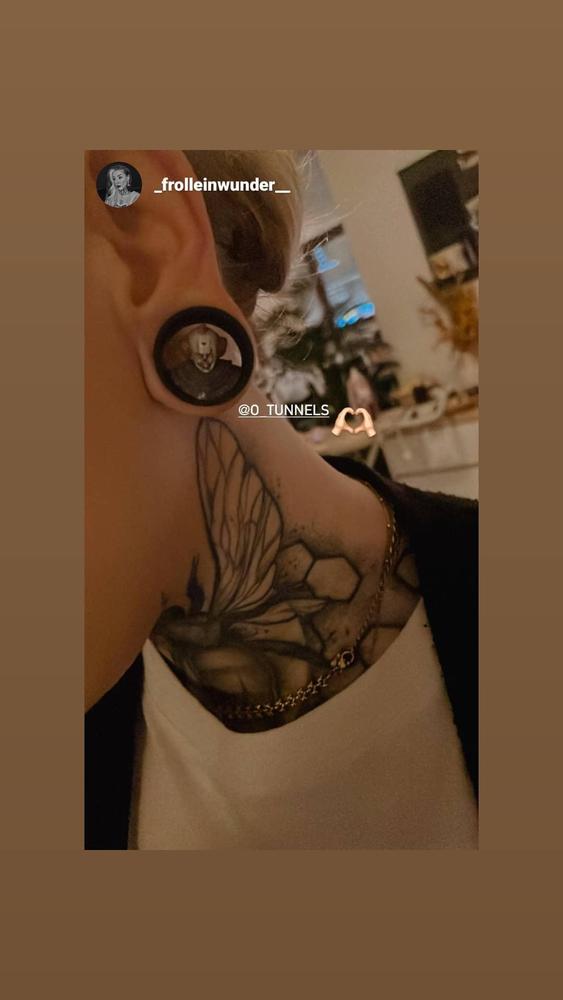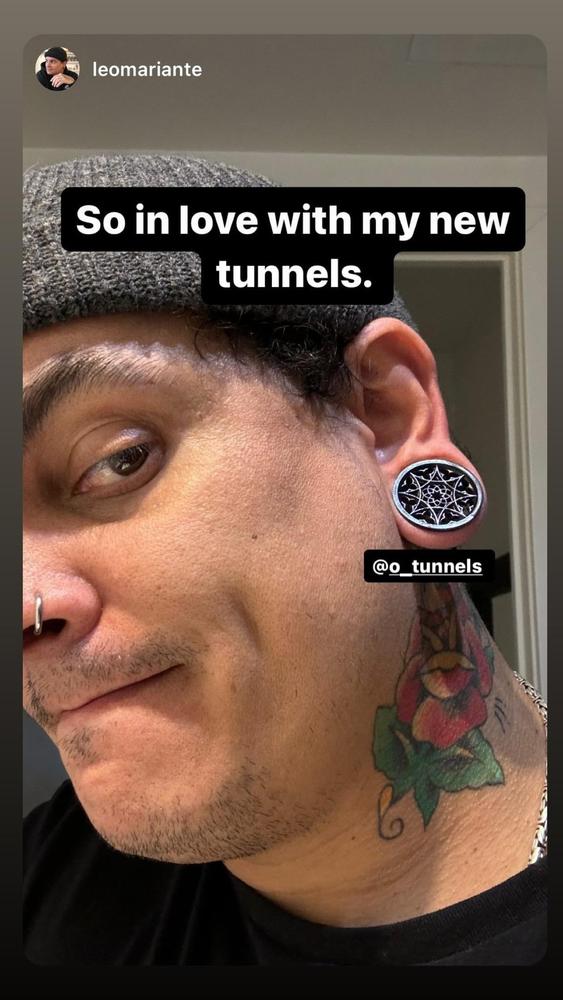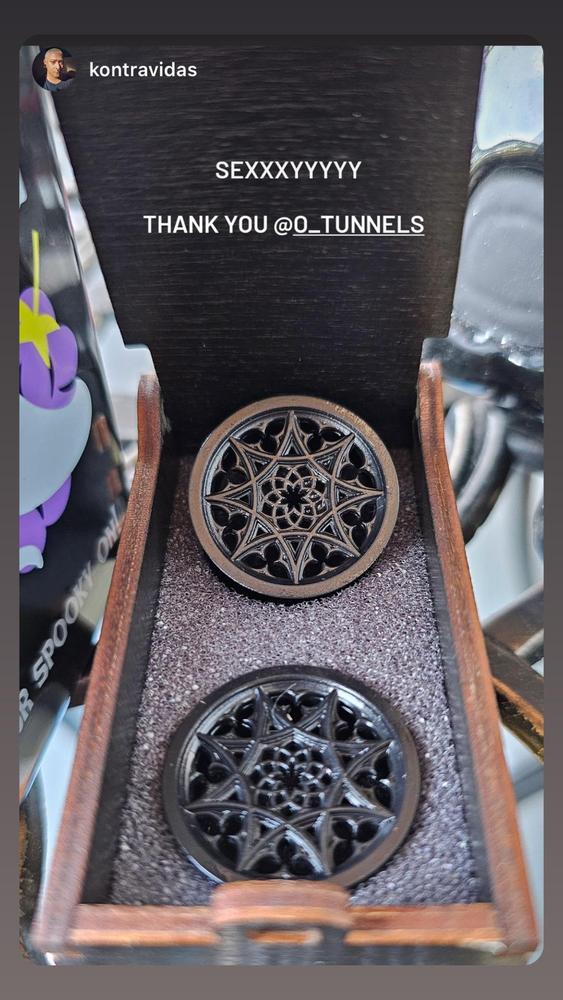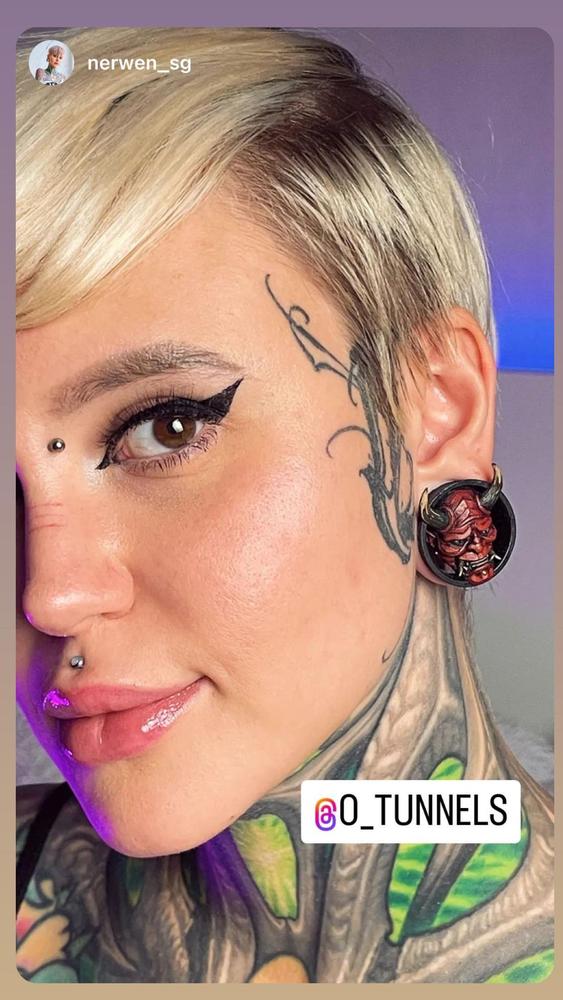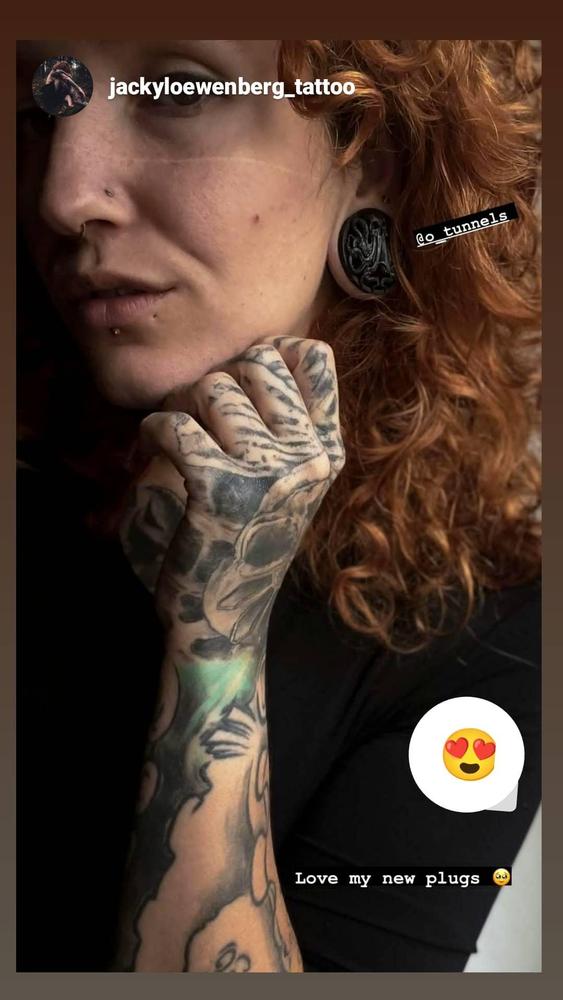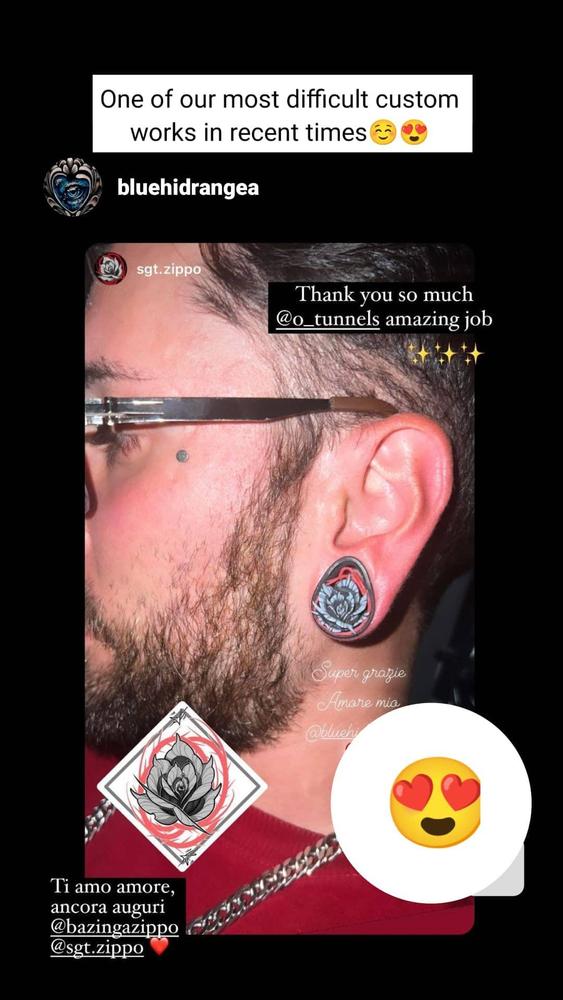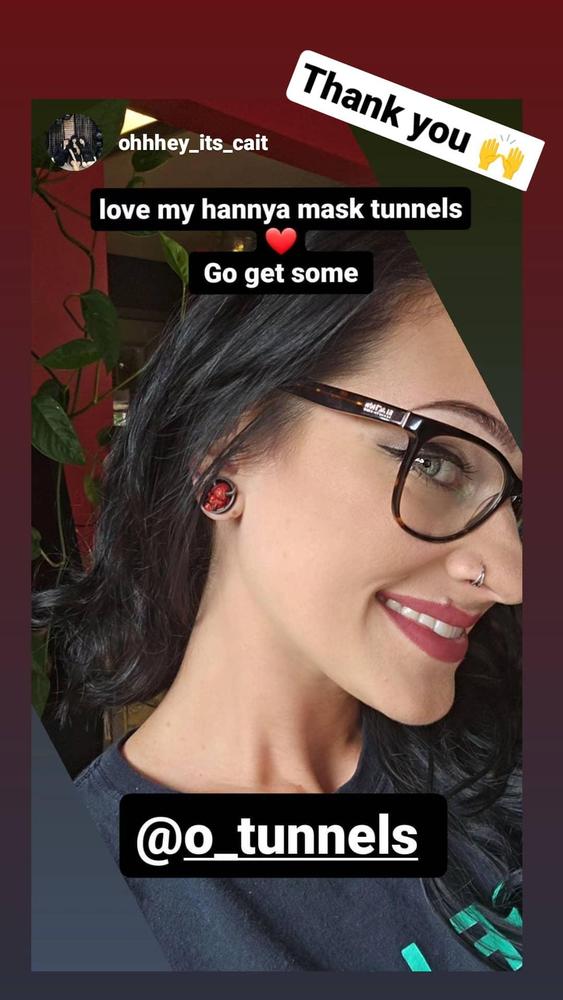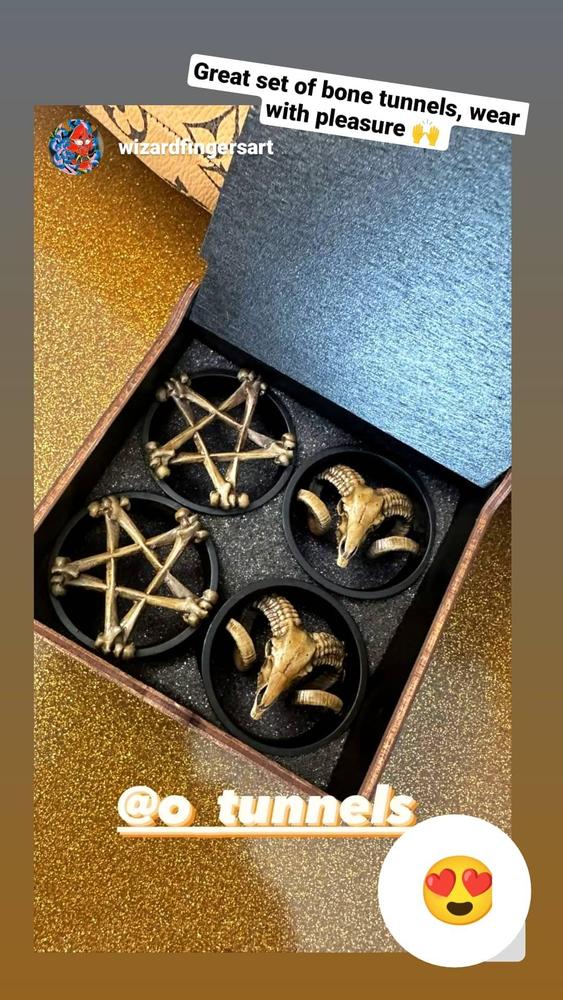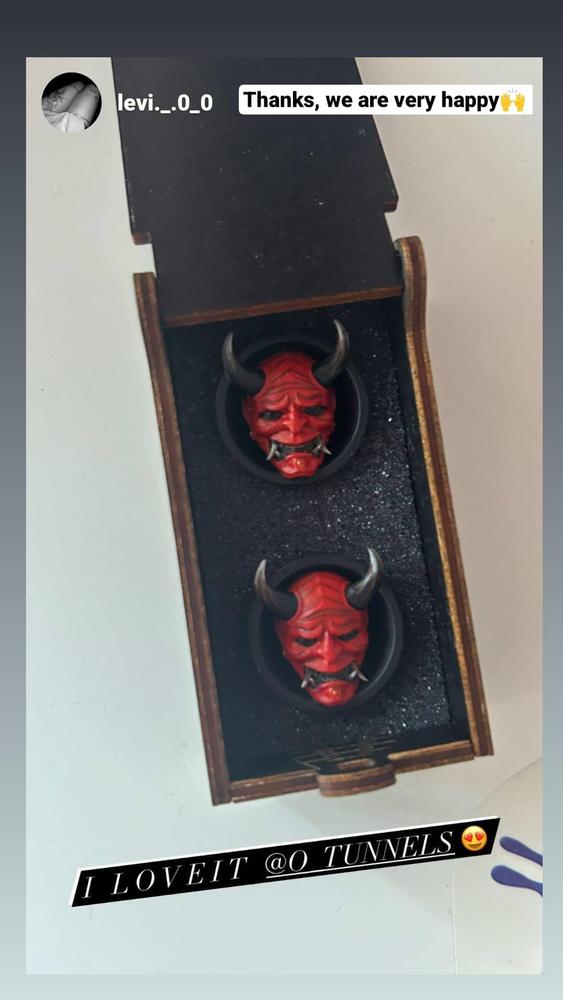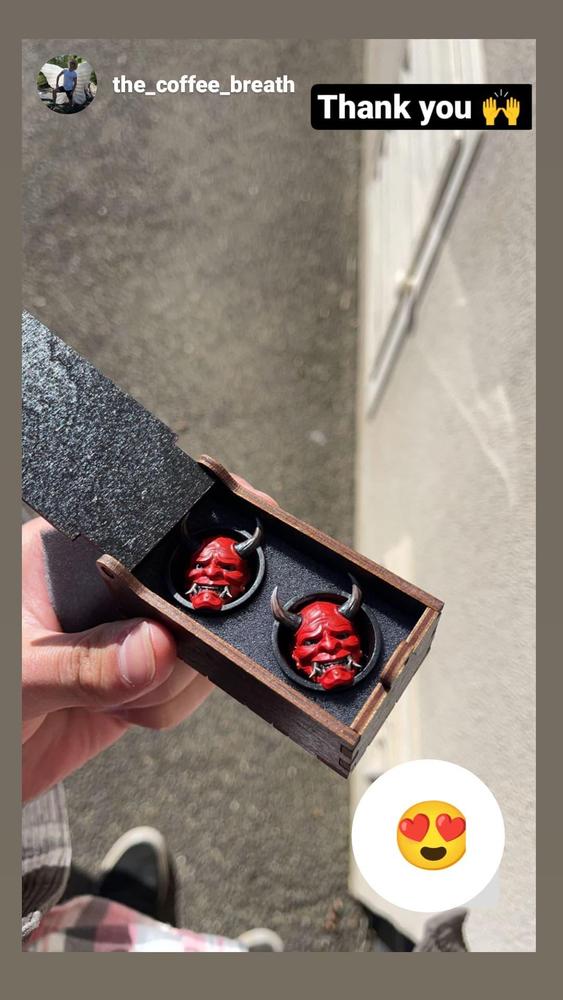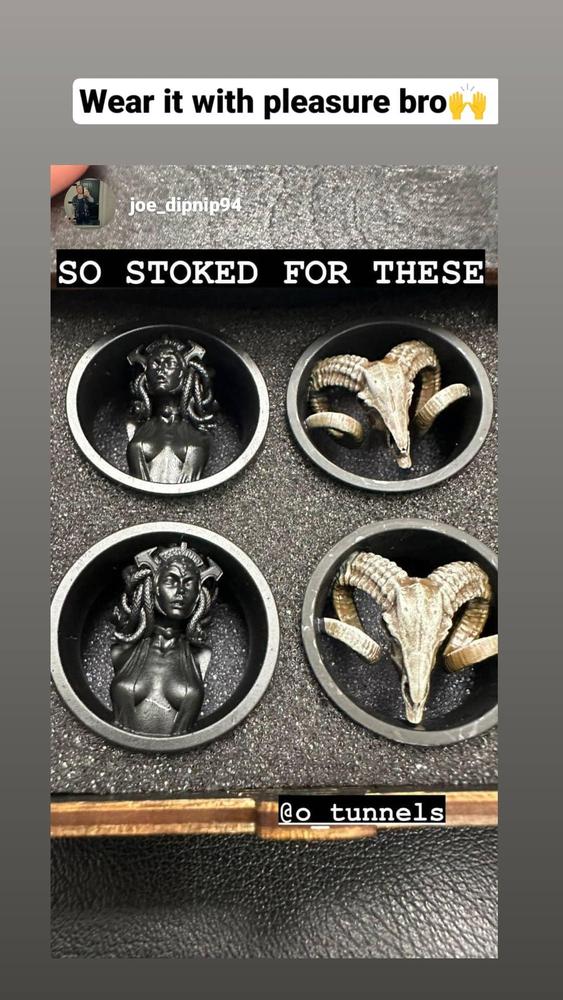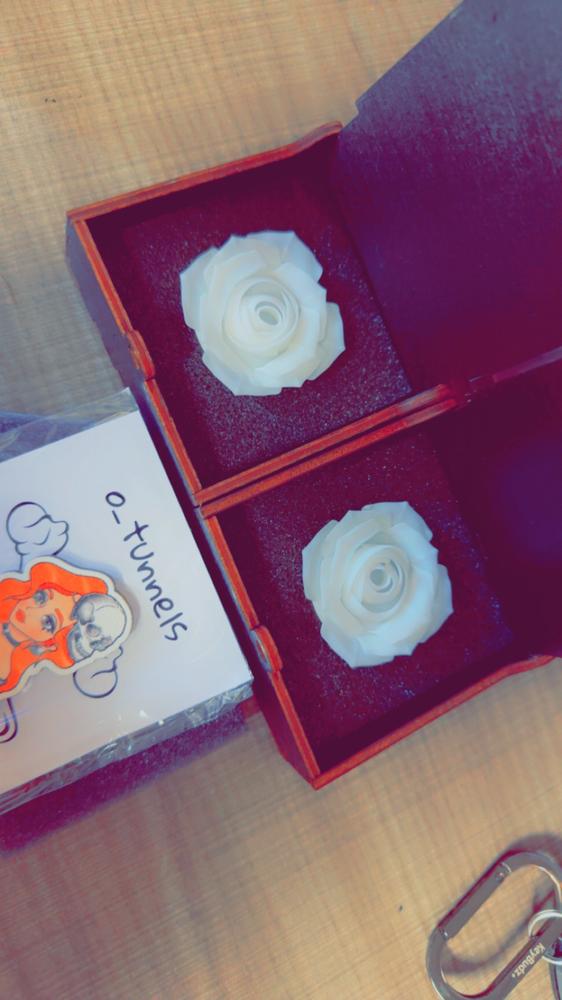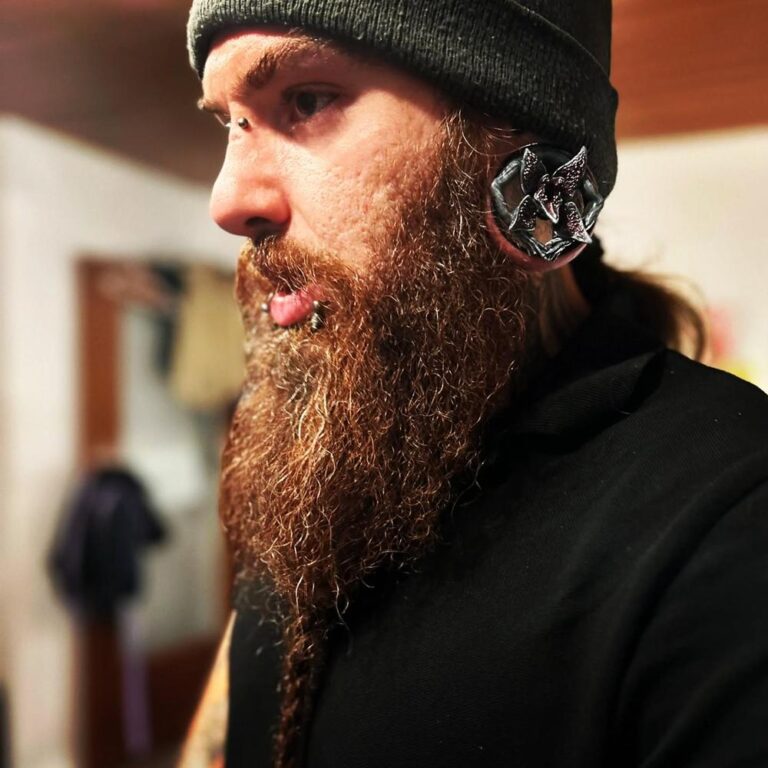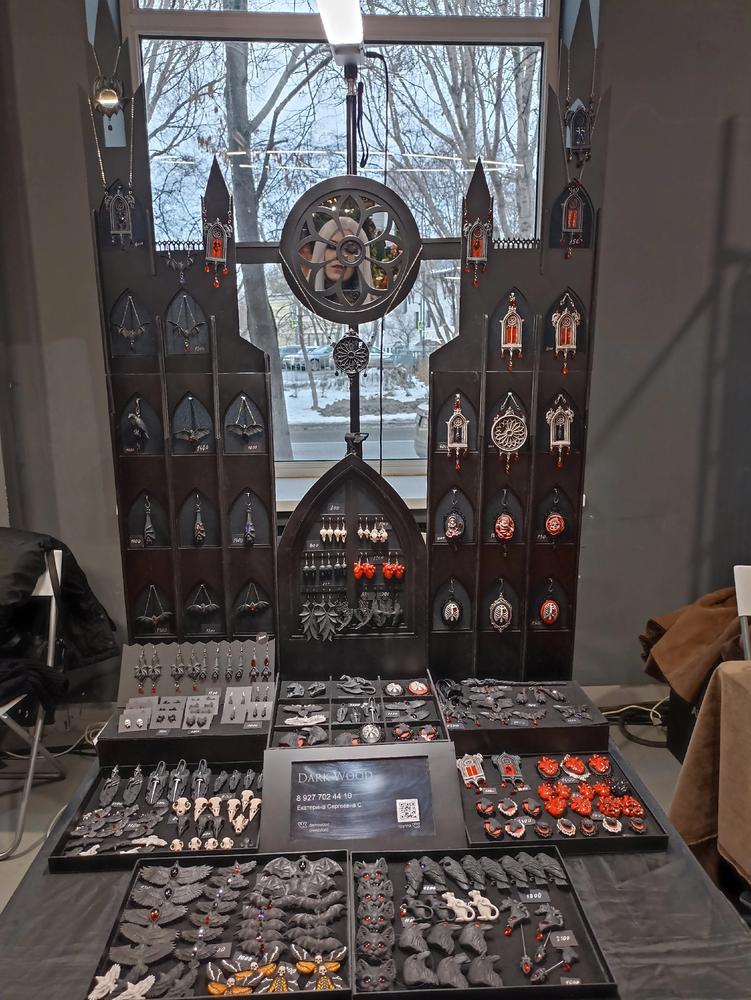How about a deep dive into the history of plugs and tunnels? Let’s also explore famous individuals with Ear Stretching Through the Ages: From Buddha to Modern Icons.
Have you ever spotted someone with stretched ears and wondered about the history and significance behind this unique form of body modification? Ear stretching, also known as ear gauging, has a rich history that spans across continents and centuries. From ancient civilizations to modern-day celebrities, this practice has evolved and adapted, serving various cultural, spiritual, and personal purposes.
Notable Figures in Ear Stretching History
- Buddha: Siddhartha Gautama, known as Buddha, is often depicted with stretched ears in statues and paintings. These long, pendulous earlobes symbolize wisdom and enlightenment, fundamental aspects of his teachings.
- King Tutankhamun: The young Egyptian Pharaoh, King Tut, adorned his ears with jewelry, reflecting the practice of earlobe stretching among royalty in ancient Egypt. His golden death mask provides a glimpse of these stretched piercings.
- The Goddess Chalchiuhtlicue: As the Aztec Goddess of Water and Navigation, Chalchiuhtlicue wore jade stones in her ears, with jade representing the divine symbol for water.
Learning about these historical figures not only sheds light on societal norms but also emphasizes how individual expression has thrived across centuries. Today, ear stretching remains popular, with modern icons proudly sporting stretched ears, including Scarlett Johansson, Kehlani, T-Pain, Melanie Martinez, Josh Dun, Jackson Galaxy, and Travie McCoy, to name a few.

The Ancient Origins of Ear Stretching
Ear stretching dates back to 3300 BCE, with the discovery of the frozen mummy Ötzi. This practice found its cultural roots in ancient Egypt, where it became a part of societal norms and personal expression. Over time, it expanded globally, each region infusing its cultural significance into the practice.
From the Mayans in 1000 BC, who used stone heads on Easter Island as evidence of stretched lobes, to Greek, Asian, and African cultures in the 2nd century, which adorned authority figures with large stretched ear lobes and jewelry, ear stretching left its mark across various civilizations.
In the 5th century, it became a symbol of status and power in ancient Greece, particularly among royal families and spiritual leaders. This trend continued into the 7th and 10th centuries among ethnic minorities and female figures in Asian hill tribes. The 12th century saw the Olmecs, and in the 16th century, even ancient Egyptian piercings revealed ear stretching as a cultural practice.
By the 20th century, ear stretching evolved from a cultural ritual to a form of self-expression in the western world, gaining acceptance and celebration among subcultures.
Why Do People Stretch Their Ears?
People stretch their ears for various reasons. Aesthetics, personal style, adherence to cultural traditions, spiritual symbolism, and adopting the latest style trend are some of the motivations behind this practice. In the 1990s, ear stretching and unique plugs became symbols of rebellion in counterculture movements, evolving from a perceived offshoot of anti-social activities in the 1960s.
While stretching used to carry a negative connotation in the early 20th century due to its association with tribalism or paganism, it has since become widely accepted and celebrated among certain subcultures. Today, wearing unique plugs isn’t just a fashion statement but an integral part of one’s identity.

Ear Stretching in Different Cultures
In Africa, elongated earlobes symbolized wisdom and maturity. African ear stretching, also known as African gauges, is deeply rooted in various cultures, reflecting different meanings across tribes and communities. Women in some African cultures stretch not only their ears but also their lower lips, adorning lip plates as a sign of beauty and social status.
The Maasai tribe in Kenya is renowned for their traditional beadwork earrings worn through significantly enlarged piercings. Similarly, the Maori tribe in New Zealand views wearing stretched ear jewelry as a symbol of social status.
The Huaorani tribe in the Amazon starts ear lobe stretching in childhood, and as they age, elders remove their stone or wood jewelry to showcase their stretched lobes.
Celtic, Viking, and Pirate Ear Stretching
Celtic artifacts found in Ireland, such as gold ear-reels, indicate that the Celts practiced ear stretching. Viking warriors, on the other hand, are not known to have stretched their ears due to the battlefield risks and harsh Nordic climates. Pirates, inspired by Viking culture, embraced ear piercing and took it to the next level.
The Rich Legacy of Ear Stretching
Ear stretching has left a rich legacy, from its ancient origins in different cultures to its modern resurgence as a form of self-expression. It serves as a bridge connecting us to our ancestors and diverse cultures worldwide. Each stretched ear tells a unique story, carrying elements of history, symbolism, and personal identity.
So, the next time you encounter someone with stretched ears, remember that they are not just making a fashion statement; they are carrying a piece of history and culture with them. Ear stretching, once seen as taboo, has become a trendy and celebrated form of self-expression in today’s world.
The Evolution of Ear Stretching Jewelry
Over time, the tools and jewelry used for ear stretching have evolved, just as the practice itself. In the ancient world, people had to make do with whatever materials were available. Sharp plant roots, thorns, porcupine quills, pine needles, tusks, and bones were some of the common piercing tools of the past. To reduce the risk of infection, they used healing salves and oils made from local herbs.
The stretching process was different back then, with a method called “dead stretching” being common. This involved forcing a larger piece of jewelry into the earlobe with the help of natural oils. Unlike modern practices that emphasize stretching only after the initial piercing has fully healed, some ancient cultures practiced forms of “dead stretching” immediately after the initial piercing. This method was more painful, riskier, and resulted in more scar tissue, leaving the earlobes permanently stretched.
Additionally, when the skin became too damaged for further stretching or there was a risk of tearing, people turned to a practice called “scalpelling.” Even today, some studios offer this procedure, where the inner side of the healed stretched earlobe is carefully cut to increase its size beyond what can be achieved with regular piercing.
Modern Era Tribes and Ear Stretching
Remarkably, traditional ear stretching isn’t a thing of the past. Various tribes and civilizations in the modern world have preserved this practice. Many are located in Africa, but similar practices can also be found in Asia and other parts of the world.
Mursi Women: The Mursi women from Ethiopia are a prominent example. They insert large wooden plates into their earlobes and lower lips. While there was once a misconception that larger lip plates brought more bridewealth in marriage, this idea has been debunked. The decision to stretch their ears and lips is left to the girls, and the initial piercing is typically done when they reach the age of 15 or 16. Wooden plugs are immediately inserted, and they are gradually stretched along with their earlobes.

Maasai People: The Maasai tribe, inhabiting Kenya and Tanzania, also practices ear stretching using natural materials like stone, bones, wood, and tusks. They start with a piercing using a knife or thorn and gradually increase the size by adding heavier jewelry. Older tribe members often have larger stretches, signifying their age and wisdom. They adorn their stretched earlobes with intricate and colorful beads, with a single ear weight replacing plugs to maintain the stretch.
Fulani Tribe: The Fulani, primarily residing in Nigeria but also found in other West and Central African countries, start ear stretching at the age of three for girls. However, they don’t stretch to large diameters but prefer minimal and hardly noticeable stretches. Instead, they wear large traditional earrings made of gold, known as “kwottone kanye,” which can be up to five inches in length. These earrings serve as a form of portable wealth and are used for trading with other tribes they encounter.
Asian Hill Tribes: Ear stretching in Asia is now limited to a couple of Asian hill tribes, such as the Lahu tribe in Thailand and the Karen-Padaung tribe in Myanmar. These tribes believe that ears are sacred and should be adorned with as much jewelry as possible.
How Have Traditional Ear Strethcing Methods Shaped The Modern Practice
Ear stretching, a practice deeply rooted in human culture, has undergone a remarkable transformation from its traditional origins to its modern iterations. Understanding this evolution allows us to appreciate the rich tapestry of techniques and materials that make up the world of stretched ears.
In the annals of history, ear stretching was not merely a fashion statement but a reflection of one’s status, identity, and beliefs. Traditional methods, though now considered less safe than modern practices, played a pivotal role in shaping this art form. Here, we delve into these traditional methods and explore how they compare to the modern techniques that have gained popularity today.
The Ancient Egyptian Influence:
The Egyptians, known for their innovation in various fields, including body modification, are thought to have pioneered ear-stretching techniques. While the specifics of their methods remain somewhat elusive, it’s believed they used a practice called “dead stretching,” which involved gradually increasing the size of gauge earrings worn in the ears over time. In essence, they initiated the art of ear stretching as we know it today.
However, one must tread carefully when drawing parallels between ancient Egyptian practices and modern standards. In ancient times, ear stretching was driven more by aesthetics and less by considerations of health and safety. We now know that stretching with weights, a method they likely employed, is not advisable due to potential complications.
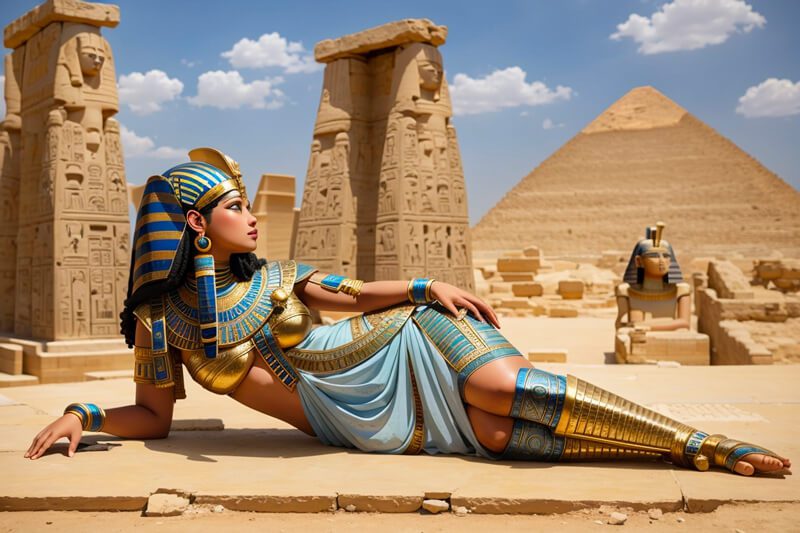
Traditional Methods Across Cultures:
Ear stretching was not limited to Egypt; it spanned the globe, taking on unique forms in different cultures. The Etruscans, for instance, used studs attached to chains and discs to stretch their earlobes as far back as the 6th century BC.
In Africa, tribes like the Maasai used thorns from acacia trees and pieces of elephant tusks to gradually increase the size of their ear piercings. This practice symbolized wisdom and maturity within their society.
Tribes in South America, on the other hand, favored natural elements such as bones and feathers for ear stretching. These diverse methods underscore the universal human fascination with body modification as a means of self-expression and identity.
Modern Techniques and Tools:
In stark contrast to traditional methods, modern ear stretching techniques have witnessed significant advancements. These contemporary approaches prioritize both aesthetics and the health of the individual.
Today, enthusiasts have an array of tools at their disposal, including tapers, tunnel plugs, and tape, allowing for more precise control over the stretching process. These tools minimize the risk of complications associated with traditional methods.
A Balance Between Tradition and Modernity:
Whether one chooses to follow a traditional path or embrace modern techniques, one principle remains paramount: patience and care. Regardless of the method, the key to achieving healthy, beautifully stretched ears is to start slowly and be mindful of the body’s response.
Ear stretching stands as a testament to the timeless interplay between tradition and modernity. It serves as a bridge connecting us to our ancestors who saw stretched earlobes as symbols of status and wealth. Today, it’s a reflection of individuality and personal style, embodying the enduring human desire to express ourselves through the canvas of our bodies.
As we continue to push the boundaries of self-expression and body modification, it’s essential to honor the roots of this practice while embracing the safety and creativity that modern techniques offer. Ear stretching, in all its historical and contemporary glory, remains a captivating journey through the human experience. From ancient thorns to cutting-edge tunnel plugs, it’s a testament to our unending quest to redefine and celebrate our unique identities.
The Evolution of Materials in Ear Stretching: from Ancient Treasures to Modern Marvels
Ear stretching is not just a testament to human creativity and personal expression; it’s also a showcase of the remarkable evolution of materials used in this age-old practice. From ancient civilizations to modern subcultures, the materials employed have mirrored the changing landscapes of culture and technology.
The Precious Elegance of Ancient Egypt and Mayans:
The ancient Egyptians and Mayans were pioneers of ear stretching, adorning their earlobes with materials that spoke of wealth and beauty. Materials like gold, jade, and alabaster were cherished for their opulence and allure.
In the world of ancient body modification, ear stretching was a canvas for showcasing prized materials. The Mayans, for instance, crafted intricate ear flares from jade, a testament to their reverence for this precious stone. The ancient Egyptians, no strangers to extravagance, used giant plugs to stretch their earlobes, as evidenced by the discovery of King Tutankhamen’s burial site.

Before Plugs and Tunnels: The Era of Ear Spools and Ear Flares:
Before the advent of modern tunnel plugs, ear stretching enthusiasts had different tools at their disposal. Ear flares, for instance, were designed to stretch the earlobe skin into an elongated circular shape. They served not only as adornments but also as functional tools for stretching, akin to how modern tapers are used today.
Ear spools, another ancient accessory, made their appearance in Egypt around 1400 BC. These intriguing artifacts likely found their way to Asia and Greece, dating back to the 4th century BC. Ear spools came in various sizes, some as large as 155mm (6.1″) in diameter, showcasing the diversity of ear stretching across cultures.
A Transition from Ancient Treasures to Modern Marvels:
The materials used in ear stretching have evolved in tandem with human progress. In the age of the Egyptians and Mayans, precious metals and stones reigned supreme. Gold and silver became the preferred materials among Egyptian nobility around 3000 BC, coinciding with the rise of piercing stretching as a status symbol.
In contrast, modern ear stretching has witnessed the introduction of innovative materials like silicone and acrylic. These materials have opened up a world of possibilities, offering a vast array of ear plugs, flesh plugs, and ear flares in various styles and colors.
The shift towards modern materials is not merely about aesthetics but also safety. Biocompatible metals like implant-grade stainless steel and hypoallergenic synthetic alternatives, such as silicone, have become popular choices. These materials ensure safe long-term wear without the risk of allergic reactions often associated with traditional substances.
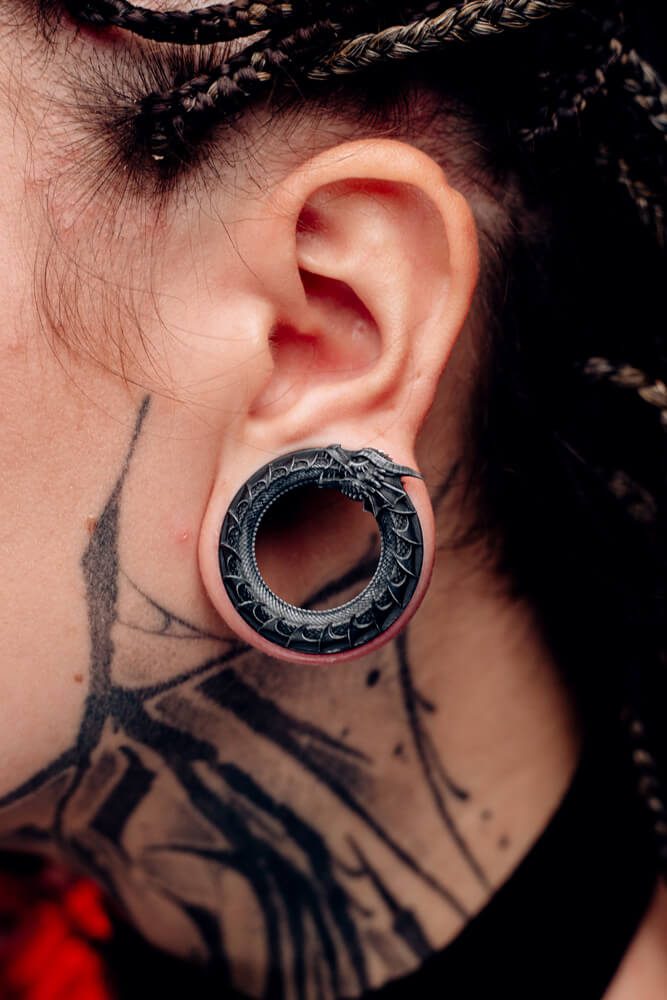
But this right here is a 100% real photograph
Preserving Tradition Amidst Modernity:
While modern materials have expanded the horizons of ear stretching, traditional materials still hold a timeless appeal. Many individuals continue to appreciate the elegance of gold jewelry, chunky gold earrings, or intricate pieces that harken back to ancient cultures.
Beyond metals and stones, traditional ear stretching has incorporated colorful beads, strings, and precious stones, showcasing the enduring allure of organic materials.
In the pursuit of safer and more accessible procedures, we’ve transitioned from organic materials like wood or bone to materials like glass, making the process simpler and less hazardous. This evolution reflects our ongoing commitment to preserving the art of ear stretching while prioritizing the well-being of practitioners.
As we look back at this fascinating journey through the materials of ear stretching, we see a reflection of our ever-evolving tastes, cultures, and technologies. Ear stretching, both ancient and modern, remains a testament to the human spirit of exploration and self-expression. Whether through gold and jade or silicone and acrylic, our journey continues, seeking new ways to adorn and transform the canvas of our bodies.
Conclusion
Ear stretching is as much an art form as it is a science today. Modern practices have evolved, providing safe and comfortable ways to stretch and care for your ears. However, the shapes and styles of ear plugs and tapers used today have intriguing similarities to those used by ancient civilizations.
From ancient Egypt to Mayans, Aztecs, and cultures across Asia and Africa, ear stretching has woven its way through the fabric of human history. What was once a practice deeply rooted in tradition and spirituality has transformed into a form of personal expression and a testament to our shared global heritage.
So, the next time you come across someone with stretched ears, you’ll not only appreciate their unique style but also the rich history and cultural significance they carry with them. Ear stretching is a bridge connecting us to our ancestors, reminding us of the enduring power of self-expression throughout the ages.
